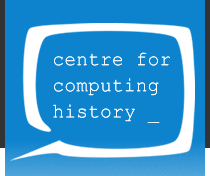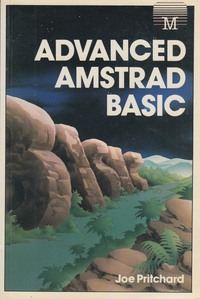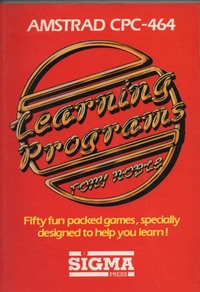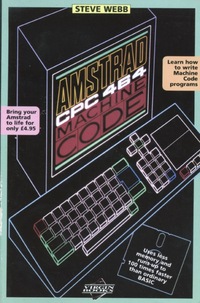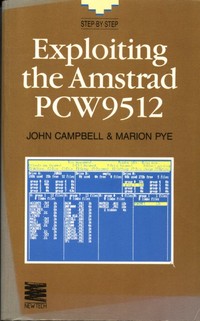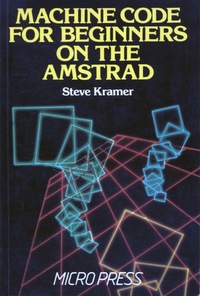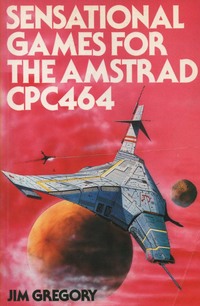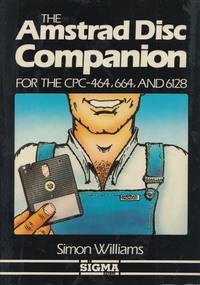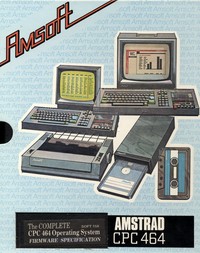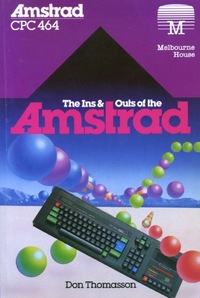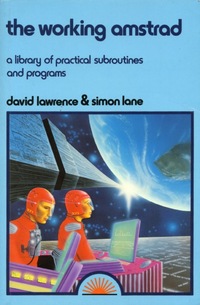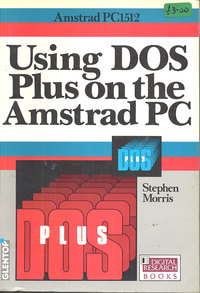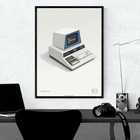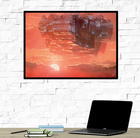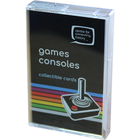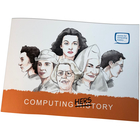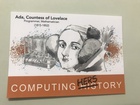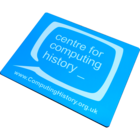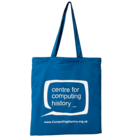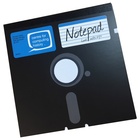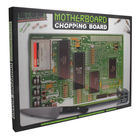Amstrad Books
The following is a list of Amstrad Books in the Centre for Computing History collection. It is not an exhaustive list of and other books may have been published. If you have a book that you would like to donate to our collection, please view our donations page.There are 60 Amstrad Books in our collection :
| Order By : Title - Release Date - Publisher |
 Date: 1991
8000 Plus - Guide to Micro Design
Date: 1991
8000 Plus - Guide to Micro Design
Publisher: Future Publishing
Author: Alec Rae
 Date: 1988
All in One Business Computing
Date: 1988
All in One Business Computing
Publisher: Sigma
Author: John M Hughes
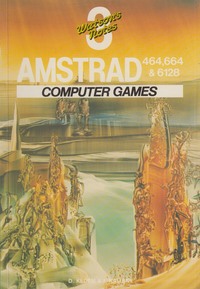 Date: December 1985
Amstrad 464,664 & 6128 - Computer Games
Date: December 1985
Amstrad 464,664 & 6128 - Computer Games
Publisher: Glentop
Author: D. Kedem, I. Kalisky
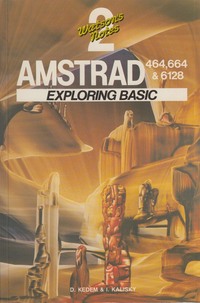 Date: November 1985
Amstrad 464,664 & 6128 - Exploring BASIC
Date: November 1985
Amstrad 464,664 & 6128 - Exploring BASIC
Publisher: Glentop
Author: D. Kedem, I. Kalisky
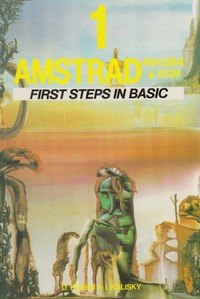 Date: July 1985
Amstrad 464,664 - First Steps in BASIC
Date: July 1985
Amstrad 464,664 - First Steps in BASIC
Publisher: Glentop
Author: D. Kedem, I. Kalisky
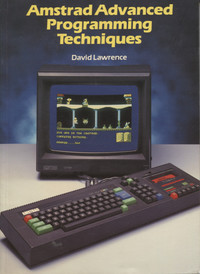 Date: 1985
Amstrad Advanced Programming Techniques
Date: 1985
Amstrad Advanced Programming Techniques
This book is intended to show you how to develop serious applications programs for use on your Amstrad CPC 464 or 664. David Lawrence emphasises throughout the importance of good program planning and design, and illustrates the principal points with a host of examples.
The book begins with a look at the advantages of modular programming, which makes subsequent checking and debugging on your routines much easier. There follow chapters of debugging, proper methods of inputting information, string handling techniques, error trapping, storage and retrieval, data structures, sorting and searching.
At each stage there are handy hints and tips which suggest new ways of tackling problems - how to save greater volumes of data in your Amstrad's memory, or how to sort a long list of items efficiently. These make the book a handy ready reference to have available whenever you are tackling a new and potentially difficult program.
Publisher: Sunshine Books
Author: David Lawrence
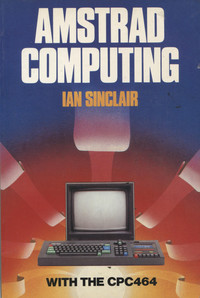 Date: 1984
Amstrad Computing with the CPC464
Date: 1984
Amstrad Computing with the CPC464
From back cover:
...Just as you would find it difficult to learn a foreign language from a dictionary, you will probably find it difficult to learn to master your Amstrad CPC464 from the manual alone. This book takes you step by step, in detail, through the commands.
Publisher: Granada
Author: Ian Sinclair
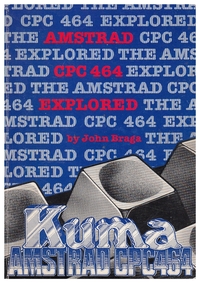 Date: 1984
Amstrad CPC 464 Explored
Date: 1984
Amstrad CPC 464 Explored
Amstrad Explored is a book designed to let every CPC 464 user, at whatever level, get the most from his computer. After an introductory section on the special Basic features, the book looks in depth at the excellent sound and graphic utilities including:
- Animation
- Windows
- Character Sets
- Multitasking
- 3 Voice Tunes
- M/C routines from Basic
- Use of Zen
- Use of O/S
- Sample Programs
Publisher: Kuma Computers Ltd.
Author: John Braga
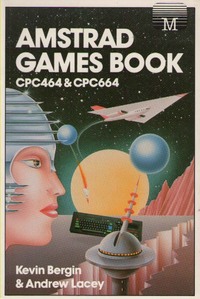 Date: 1985
Amstrad Games Book CPC464 & CPC664
Date: 1985
Amstrad Games Book CPC464 & CPC664
by Kevin Bergin & Andrew Lacey.
Paperback 210 pages
Published 1985 by Melbourne House
Written in English.
Open Library OL20625791M
ISBN 10 0861611950
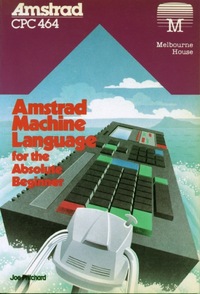 Date: 1985
Amstrad Machine Language for the Absolute Beginner
Date: 1985
Amstrad Machine Language for the Absolute Beginner
Publisher: Melbourne House Publishers
Author: Joe Pritchard
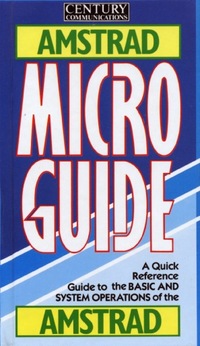 Date: 1985
Amstrad Micro Guide
Date: 1985
Amstrad Micro Guide
A Quick Reference Guide to the BASIC AND SYSTEM OPERATIONS of the Amstrad
Publisher: Guild Publishing
Author: Professor Peter Morse and Brian Hancock
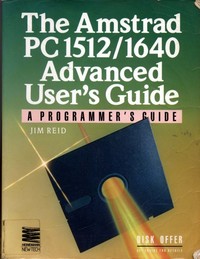 Date: 1st January 1984
Amstrad PC 1512/1640 Advanced Users Guide: A Programmer's Guide
Date: 1st January 1984
Amstrad PC 1512/1640 Advanced Users Guide: A Programmer's Guide
Publisher: Butterworth-Heinemann
Author: Jim Reid
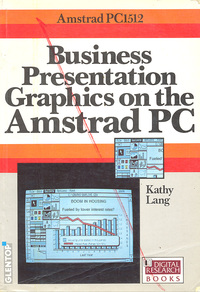 Date: 1986
Amstrad PC1512 - Business Presentation Graphics on the Amstrad PC
Date: 1986
Amstrad PC1512 - Business Presentation Graphics on the Amstrad PC
Publisher: Glentop
Author: Kathy Lang
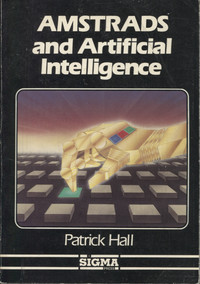 Date: 1986
Amstrads and Artificial Intelligence
Date: 1986
Amstrads and Artificial Intelligence
"This book is intended as a companion to another book... Build Your Own Expert System. In this new book, Patrick Hall surveys the broad field of contemporary AI ... and working examples that are ready to run on the Amstrad CPC464 series computers (and, with minor changes, on most popular micros)."
Publisher: Sigma Technical Press
Author: Patrick Hall
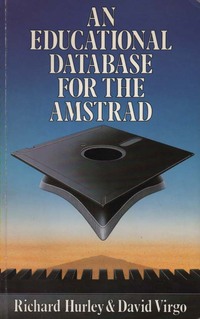 Date: 1985
An Educational Database for the Amstrad
Date: 1985
An Educational Database for the Amstrad
Publisher: Duckworth
Author: Richard Hurley & David Virgo
 Date: 1988
An Introduction to BASIC 2 on the Amstrad PCs
Date: 1988
An Introduction to BASIC 2 on the Amstrad PCs
"The aim of this book is to teach you to program the Amstrad PC1512 and PC1640 computers in Locomotive BASIC 2. It assumes no prior knowledge of computers or programming, and it is hoped it will show that BASIC programming is not nearly as difficult as it might appear at first sight, and can be both interesting and enjoyable."
Publisher: Bernard Babani
Author: J W Penfold
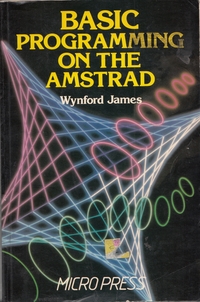 Date: 1984
BASIC Programming on the Amstrad
Date: 1984
BASIC Programming on the Amstrad
From the blurb:
'The Amstrad CPC464 is a powerful new machine with excellent sound and colour graphics facilities. The official Amstrad manual offers a sprint through the facilities of the machine. This book is for the joggers, the walkers and those who are not sure they can even manage to reach the starting line.'
Publisher: Amstrad
Author: Wynford James
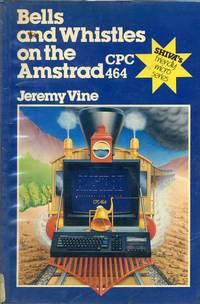 Date: 1984
Bells and Whistles on the Amstrad CPC 464
Date: 1984
Bells and Whistles on the Amstrad CPC 464
Publisher: Shiva Publishing Limited
Author: Jeremy Vine
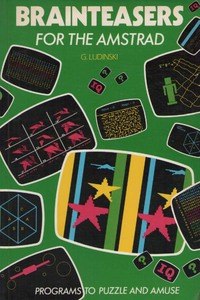 Date: February 1985
Brainteasers for the Amstrad
Date: February 1985
Brainteasers for the Amstrad
'Programs to puzzle and amuse'
Here at last is a collection of programs worthy of the title 'Brainteasers' and worthy of the computers for which they are designed. Built around a competition element you will be asked questions requiring logic, general knowledge and mathematical skills in your answers.
Publisher: Phoenix Publishing Associates
Author: Geneviève Ludinski
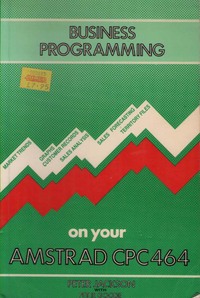 Date: 1985
Business Programming on Your Amstrad CPC 464
Date: 1985
Business Programming on Your Amstrad CPC 464
Publisher: Phoenix Publishing Associates
Author: Peter Jackson with Peter Goode
 Date: 16th May 1988
Communications with the Amstrad PC
Date: 16th May 1988
Communications with the Amstrad PC
Publisher: Blackwell Science Ltd
Author: Ian R. Sinclair
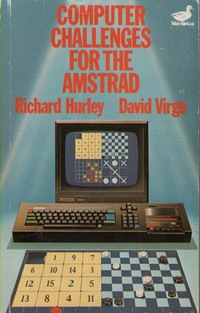 Date: April 1985
Computer Challenges for the Amstrad
Date: April 1985
Computer Challenges for the Amstrad
With the aid of ten superb programs, this book demonstrates the use of artificial intelligence on the Amstrad CPC464. The first two chapters introduce you to the principles of artificial intelligence and the more advanced features of Locomotive Basic which are used in this book. The rest of the book is divided into two parts: the first contains puzzles for you to solve; and the second a collection of stimulating game sin which you will find the computer a worthy adversary.
Publisher: Gerald Duckworth & Co.
Author: Richard Hurley & David Virgo
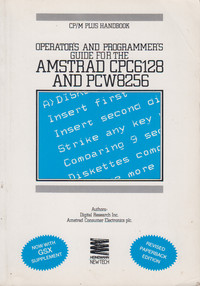 Date: 1986
CP/M Plus Handbook
Date: 1986
CP/M Plus Handbook
Operator's and Programmer's guide for the Amstrad CPC6128 and PCW8256
Publisher: Heineman
Author: Digital Research Inc and Amstrad Comsumer Electronics
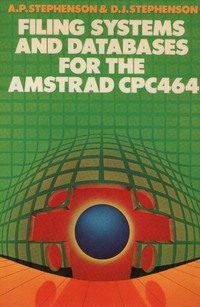 Date: May 1985
Filing Systems and Databases for the Amstrad CPC 464
Date: May 1985
Filing Systems and Databases for the Amstrad CPC 464
Publisher: Harper Collins Publishers Ltd
Author: A.P. Stephenson & D.J. Stephenson
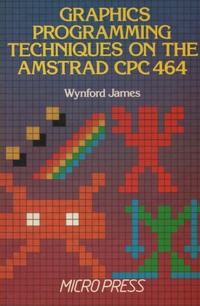 Date: 1985
Graphics programming techniques on the Amstrad CPC 464
Date: 1985
Graphics programming techniques on the Amstrad CPC 464
Publisher: Micro Press
Author: Wynford James
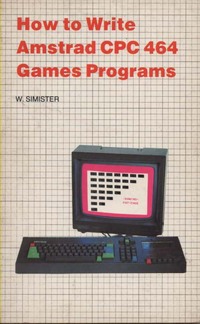 Date: 1985
How to Write Amstrad CPC 464 Games Programs
Date: 1985
How to Write Amstrad CPC 464 Games Programs
Publisher: Bernard Babani Publishing
Author: W. Simister
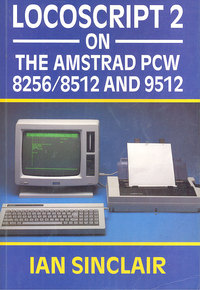 Date: 1987
Locoscript 2 on the Amstrad PCW
Date: 1987
Locoscript 2 on the Amstrad PCW
First Edition.
You do not need to know about computers to master word processing: you do not even need to have used a typewriter. Without guidance, however, teaching oneself to use a word processor can be a tedious and frustrating task, even with the Amstrad PCW.
This book enables beginners to learn professional word processing techniques really quickly without having to wade through long manuals. By following Ian Sinclair's clear examples and instructions you will soon be using your system for:
- Business letters, reports, invoices
- Envelopes and labels
- Stored phrases and paragraphs
- Forms and tables
- Multiple letters
- Long documents such as manuscript and magazine articles
Publisher: BSP Professional Books
Author: Ian Sinclair
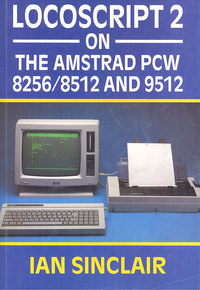 Date: 1988
Locoscript 2 on the Amstrad PCW (amended)
Date: 1988
Locoscript 2 on the Amstrad PCW (amended)
You do not need to know about computers to master word processing: you do not even need to have used a typewriter. Without guidance, however, teaching oneself to use a word processor can be a tedious and frustrating task, even with the Amstrad PCW.
This book enables beginners to learn professional word processing techniques really quickly without having to wade through long manuals. By following Ian Sinclair's clear examples and instructions you will soon be using your system for:
- Business letters, reports, invoices
- Envelopes and labels
- Stored phrases and paragraphs
- Forms and tables
- Multiple letters
- Long documents such as manuscript and magazine articles
Publisher: BSP Professional Books
Author: Ian Sinclair
 Date: October 1985
Making Music on the Amstrad CPC 464 & 664
Date: October 1985
Making Music on the Amstrad CPC 464 & 664
Ian Waugh has written 'Making Music on the Amstrad CPC 464 and 664' for the many owners of these micros who would like to take advantage of their sophisticated sound facilities, to write musical programs.
Ian Waugh is a professional musician and keen micro enthusiast, who shows you how you can make the Amstrad play music of all kinds, including effects like vibrato, echo, trills, polyphonic music and even sound effects like seagulls and ricochets. Did you know, for example, that you can turn your Amstrad into a drum synthesiser or rhythm unit using a BASIC program?
Publisher: Sunshine Books
Author: Ian Waugh
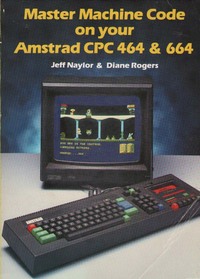 Date: October 1985
Master Machine Code on Your Amstrad CPC 464 & 664
Date: October 1985
Master Machine Code on Your Amstrad CPC 464 & 664
Publisher: Sunshine Books
Author: Jeff Naylor and Diane Rogers
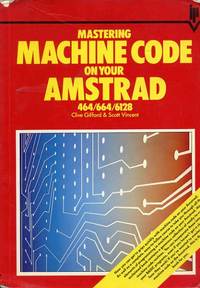 Date: March 1986
Mastering Machine Code on your Amstrad 464/664/6128
Date: March 1986
Mastering Machine Code on your Amstrad 464/664/6128
Publisher: Interface Publications
Author: Clive Gifford & Scott Vincent
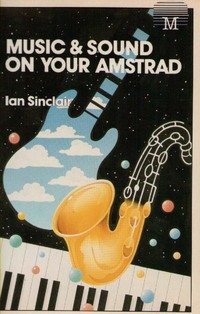 Date: June 1995
Music & Sound on Your Amstrad (CPC 464)
Date: June 1995
Music & Sound on Your Amstrad (CPC 464)
The Amstrad CPC464 contains one of the most versatile sound generating chips that can be found in any of today's computers. This guide has been designed for you, the Amstrad user, to extract the maximum benefit from the extraordinary sound capabilities of the CPC464. With the Amstrad's very powerful BASIC, you won't even need to know about machine language to create music and sound effects to delight you. Beginning with the first principles of sound you will be shown, step-by-step, how to create melodies, rhythm and fantastic sound effects to liven up your own programs. Along with the aid of the many program examples you can master the Amstrad sound chip and tap your own creativity.
Publisher: Melbourne House
Author: Ian Sinclair
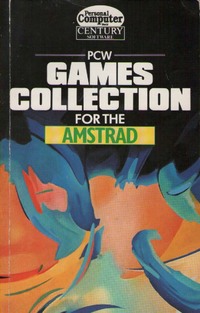 Date: 1985
PCW Games Collection for the Amstrad
Date: 1985
PCW Games Collection for the Amstrad
If you are a games addict continuously on the prowl for more and better games or looking for your first collection of listings to type in - look no further.
This sparkling collection will keep you busy for a long time. Some of the best programs that have ever appeared in the well-known magazine Personal Computer World havebeen converted for your computer and put together here in this prize collection.
Each game has been thorouhgly tested and comes with full instructions, and a useful decscription of the programmer's technique to help you pick up some hints as you go.
Test your reflexes on arcade-style games or test your wits on strategy games - there is something here for everyone.
These games are also available on cassette tape to save you typing them all in.
Publisher: Century Communications Ltd.
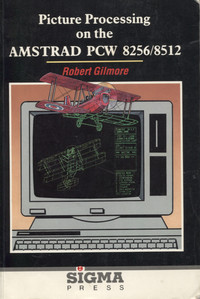 Date: 1991
Picture Processing on the Amstrad PCW 8256/8512
Date: 1991
Picture Processing on the Amstrad PCW 8256/8512
"Many people think of the PCW as a word processor, but it can also produce high quality pictures, graphs and diagrams. This book contains numerous BASIC routines for all types of design. You can produce plans for an extension to your house, rotate it and view it from any angle and then print it out. You can design a kitchen, theatrical scenery, electronic circuits - all to your own specification. And then add text, move parts of the diagrams around, cut and paste different parts of them - the possibilities are endless."
Publisher: Sigma Press
Author: Robert Gilmore
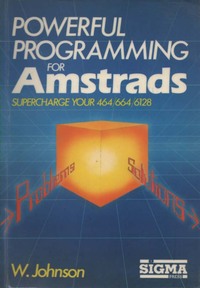 Date: 1986
Powerful programming for Amstrads
Date: 1986
Powerful programming for Amstrads
Supercharge your 464/664/6128. Written in English. ID Numbers Open Library OL15367546M OCLC/WorldCat 219816199
Publisher: Sigma Press
Author: W. Johnson
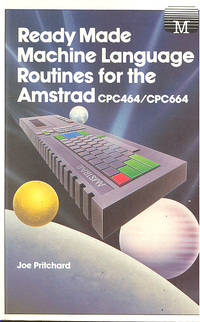 Date: Unknown
Ready Made Machine Language Routines for the Amstrad CPC464/664
Date: Unknown
Ready Made Machine Language Routines for the Amstrad CPC464/664
Give your Amstrad the power and speed of machine language without actually having to learn machine language programming
Publisher: Melbourne House
Author: Joe Pritchard
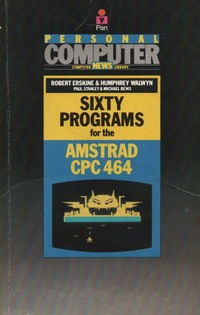 Date: 1984
Sixty Programs for the Amstrad CPC 464
Date: 1984
Sixty Programs for the Amstrad CPC 464
Publisher: Pan / Personal Computer News
Author: Robert Erskine, Humphrey Walwyn, Paul Stanley, Michael Bews
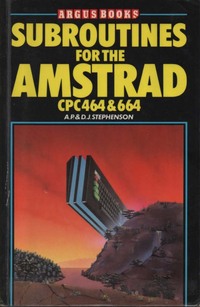 Date: 1985
Subroutines for the Amstrad CPC 464 & 664
Date: 1985
Subroutines for the Amstrad CPC 464 & 664
Publisher: Argus Books
Author: A.P & D.J. Stephenson
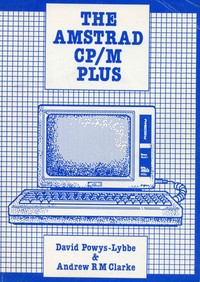 Date: June 1986
The Amstrad CP/M Plus
Date: June 1986
The Amstrad CP/M Plus
Publisher: M.M.L. Systems Ltd
Author: David Powys-Lybbe & Andrew R. M. Clarke
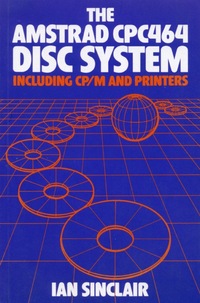 Date: 1985
The Amstrad CPC464 Disc System
Date: 1985
The Amstrad CPC464 Disc System
Including CP/M and Printers
Publisher: Collins
Author: Ian Sinclair
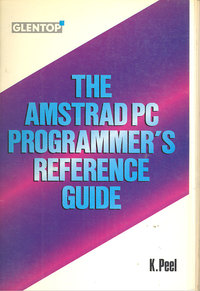 Date: February 1987
The Amstrad PC Programmer's Reference Guide
Date: February 1987
The Amstrad PC Programmer's Reference Guide
Publisher: Glentop Publishers Ltd.
Author: Kathleen Peel
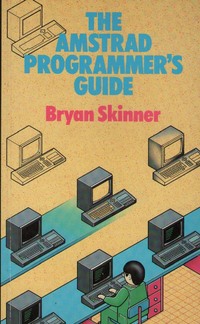 Date: 1st May 1985
The Amstrad Programmer's Guide
Date: 1st May 1985
The Amstrad Programmer's Guide
Whether you've just started programming or simply want to be able to get more from your Amstrad, you'll find this book a mine of useful information and programming ideas.
Basic programming is introduced in the first four chapters, chapter five shows how to design and code a game from scratch, and there are further chapters on machine code, sound, graphics, the cassette system and interrupts. The Amstrad's functions and facilities are clearly explained throughout and each chapter contains example programs. The book contains many useful programming techniques, such as data compression by bit-mapping, the complex use of arrays and ROM calls. Many of the chapters have longer listings which you can develop for use in your own programs.
Publisher: Gerald Duckworth & Co.
Author: Bryan Skinner
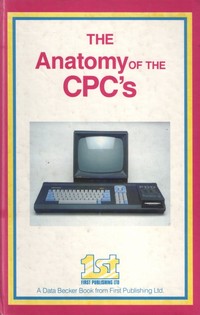 Date: 1986
The Anatomy of the CPC's
Date: 1986
The Anatomy of the CPC's
Publisher: First Publishing Ltd
Author: Bruckman Englisch & Gerits Steigers
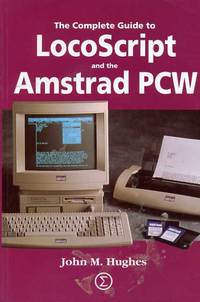 Date: 1992
The Complete Guide to LocoScript and the Amstrad PCW
Date: 1992
The Complete Guide to LocoScript and the Amstrad PCW
Publisher: Sigma Press
Author: John M. Hughes
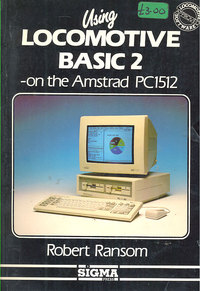 Date: 1987
Using Locomotive BASIC 2 - on the Amstrad PC1512
Date: 1987
Using Locomotive BASIC 2 - on the Amstrad PC1512
Publisher: Sigma Press
Author: Robert Ransom
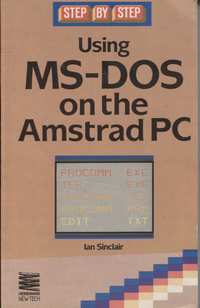 Date: 1987
Using MS-DOS on the Amstrad PC
Date: 1987
Using MS-DOS on the Amstrad PC
For the first time user, new to computers, the process of learning how to use the machine can be a daunting process. This book, Using MS-DOS on the Amstrad PC, introduces the user to MS-DOS methods for those users who have some small prior knowledge of computing but no previous experience of MS-DOS or CP/M.
Publisher: Heinemann New Tech
Author: Ian Sinclair
 Date: 1986
Word Processing with the Amstrad PCW8256 and PCW8512
Date: 1986
Word Processing with the Amstrad PCW8256 and PCW8512
Publisher: Glentop Publishers
Author: Stephen Morris
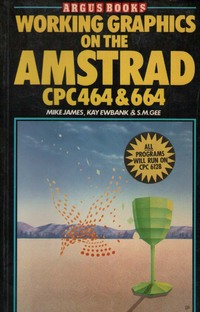 Date: 1985
Working Graphics on the Amstrad CPC 464 and 664
Date: 1985
Working Graphics on the Amstrad CPC 464 and 664
Graphics are becoming more and more important in personal computer applications, and whether your interest is in games, serious uses in the home or business applications, it's important to present the screen displays of your programs in the most effective way. This book sets out to show you how to use and how to get the best from the graphics on the Amstrad CPC464 and 664 computers. Subject covered in detail include animation and sprites, computer-assisted painting, two- and three-dimensional graphics, and charts and graphs.
Publisher: Argus
Author: Mike James, Kay Ewbank & S. M. Gee
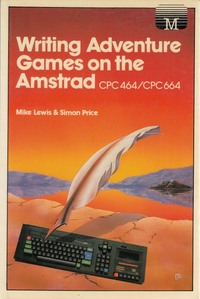 Date: 1985
Writing Adventure Games on the Amstrad
Date: 1985
Writing Adventure Games on the Amstrad
Publisher: Melbourne House Publishers
Author: Mike Lewis, Simon Price
